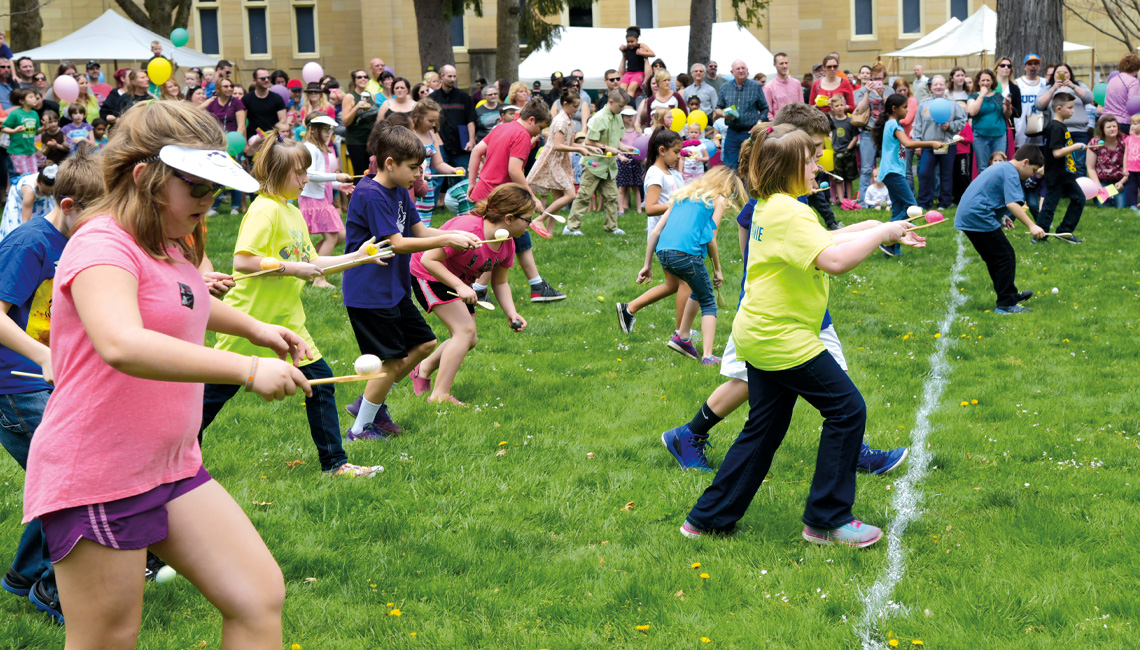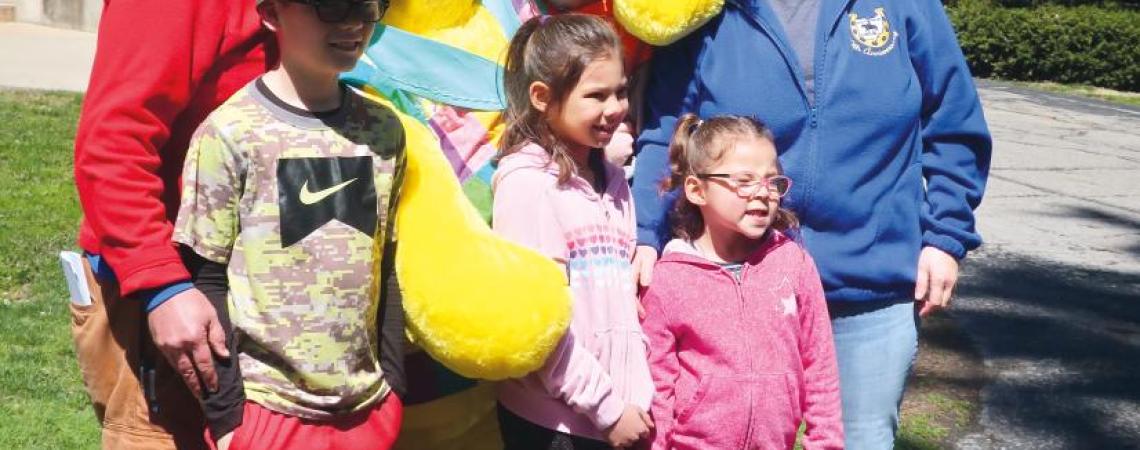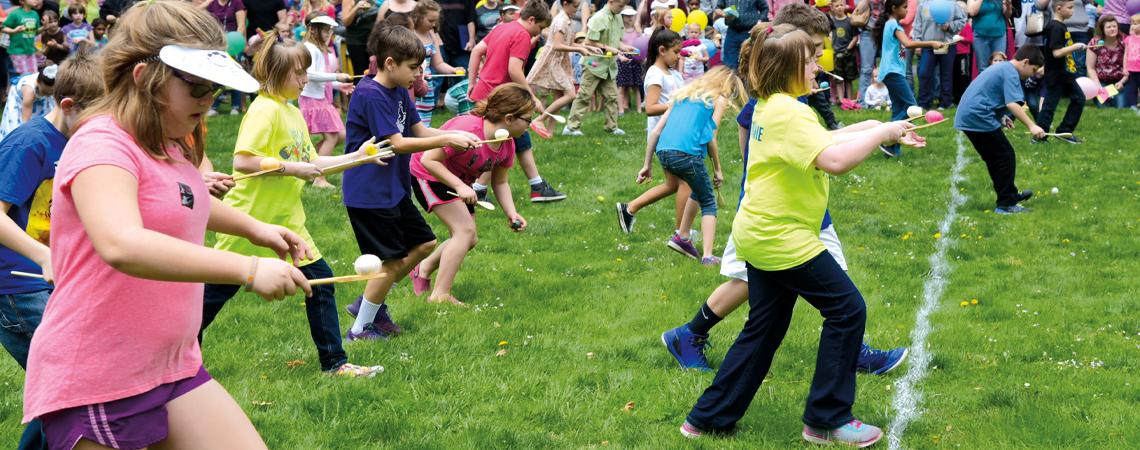For more than 25 years, children have been bringing colored Easter eggs to the Rutherford B. Hayes Presidential Library and Museums (HPLM) in Fremont. Why? To play old-fashioned games in which they use wooden spoons to roll or carry their hardboiled eggs across the front lawn of the Hayes Home, the 31-room Victorian mansion where the 19th U.S. president and his wife, Lucy, lived after leaving the White House in 1881.
The 2023 Hayes Easter Egg Roll starts at noon on April 8, the Saturday before Easter, and HPLM’s special events coordinator, Joan Eckermann, is expecting hundreds of youngsters and their family members. “People seem to love the Easter Egg Roll,” says Eckermann. “It’s such fun to see the children’s reaction when the Easter Bunny arrives.”
One of the most popular events at the Hayes Library's Easter Egg Roll is the arrival of the Easter Bunny.
Egg games were popular during the late 1800s, and in Washington, D.C., residents especially enjoyed spending Easter Monday on the grounds of the U.S. Capitol, where they picnicked and watched children rolling eggs — and often themselves — through the grass. After some rambunctious egg rollers damaged the landscaping in 1876, members of Congress promptly protected their turf by passing a law prohibiting people from using the Capitol grounds for a playground. Because it rained in 1877, the law wasn’t enforced until 1878, when police expelled youths carrying colored eggs from Capitol Hill. President Hayes saved the day for the disappointed children by letting them roll eggs on the White House’s South Lawn.
Hayes certainly had no way of knowing it on that April 22, 1878, but he started one of the executive mansion’s oldest and most beloved traditions: the White House Easter Egg Roll. Except for a few years when the nation was at war, the weather was inclement, or COVID was feared, presidents have hosted Easter Monday fun and games at the White House ever since. Indeed, the event quickly mushroomed, and in 1916, when the Easter Egg Roll resumed after a World War I hiatus, another president from Ohio — Warren G. Harding — welcomed more than 50,000 children. First Lady Florence Harding and “First Dog” Laddie Boy also joined the festivities, which included an appearance by costumed actors from the play Alice and the White Rabbit.
The Hayes Museums' Easter Egg Roll mimics the South Lawn’s rituals by featuring 1800s games, a scavenger hunt, and story reading. Obviously, if President Hayes weren’t the White House event’s founding father, kids today probably would not forsake screens and smartphones to roll eggs at HPLM. Perhaps Hayes had a soft-hearted response to Congress’s hardboiled law because he and Lucy raised five children. Or maybe Hayes let the good times roll on the South Lawn simply because egg games were the Gilded Age equivalent of cornhole.
Open to children ages 3 to 10, the 2023 Hayes Easter Egg Roll takes place on April 8. Participants should bring three hardboiled, colored eggs to use in the games. There is no charge for the event or visiting Spiegel Grove’s grounds, but the Hayes Home and Hayes Museum have admission fees. For more information, call 419-332-2081 or visit www.rbhayes.org.
The pioneer of presidential sites
In the 1860s, Sardis Birchard, a Fremont businessman who was Hayes’s uncle and boyhood guardian, constructed the original part of the Hayes Home on a 25-acre estate that he called Spiegel Grove. After Birchard died in 1874, Hayes inherited Spiegel Grove and began making improvements and additions that transformed the house into a manse whose features – including a rooftop lantern and stunning staircase — exemplify Victorian architecture. Hayes was especially partial to its splendid wraparound veranda.
Following Hayes’s death in 1893, one of his sons, Col. Webb Cook Hayes, honored his legacy by creating a library and museum at Spiegel Grove in cooperation with the State of Ohio and what is now the Ohio History Connection. Opened in 1916, the library-museum building pioneered the presidential library concept. Col. Hayes and other family members lived in the Hayes Home until 1965, and it subsequently became a house museum and HPLM’s flagship attraction.
As presidential destinations go, HPLM is exceptional because it contains a chief executive’s home, library, museum, and grave.












